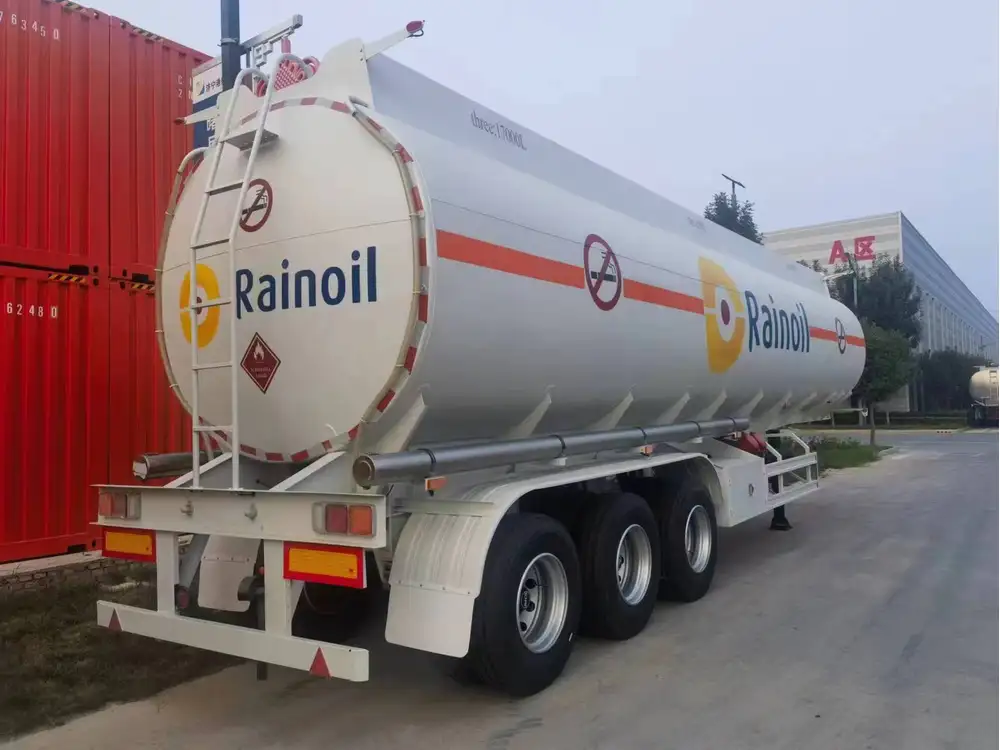Semi-trailer trucks are an integral part of the freight transportation industry, dutifully hauling goods across vast distances. A common question that arises in discussions about these colossal vehicles is whether they are rear-wheel drive. To comprehend this aspect fully, we must delve into the mechanics of semi-trailer trucks and their configurations, particularly focusing on the engine layout and how drive systems influence performance, load capacity, and traction.
Table of Contents
- Anatomy of a Semi-Trailer Truck
- 1.1 Components Breakdown
- 1.2 Functionality of the Truck Body
- Drive Mechanism in Semi-Trailer Trucks
- 2.1 What Does Rear-Wheel Drive Mean?
- 2.2 Different Drive Types in Trucking
- Rear-Wheel Drive: Pros and Cons
- 3.1 Advantages of Rear-Wheel Drive
- 3.2 Disadvantages of Rear-Wheel Drive
- Alternatives to Rear-Wheel Drive
- 4.1 Front-Wheel Drive: Is it Suitable for Trucks?
- 4.2 All-Wheel Drive: The Best of Both Worlds?
- Factors Influencing Drive System Selection
- Conclusion
1. Anatomy of a Semi-Trailer Truck

1.1 Components Breakdown
To grasp the concept of whether semi-trailer trucks are rear-wheel drive, we must first dissect their structural components. Generally, a semi-trailer truck comprises:
- Tractor Unit: This is the front portion that houses the engine and is equipped with a cabin for the driver.
- Semi-Trailer: The cargo-carrying unit that attaches to the tractor via a fifth-wheel coupling.
- Axles: These are critical for load distribution and drive; semi-trailer trucks typically have two or more axles.
- Tires: The wheels that provide road contact, crucial for traction and load-bearing capacity.
- Suspension System: It ensures stability and absorbs road shocks.
1.2 Functionality of the Truck Body
The operating principle of a semi-trailer truck is relatively straightforward: the tractor unit pulls the semi-trailer, which is designed to carry heavy loads. The interaction between the vehicle’s drivetrain and road conditions dictates its handling characteristics.
2. Drive Mechanism in Semi-Trailer Trucks

2.1 What Does Rear-Wheel Drive Mean?
Rear-wheel drive (RWD) refers to a vehicle configuration where the power from the engine is directed to the rear wheels only. This traditional setup has been prevalent in many vehicles, including trucks. In the context of semi-trailer trucks, the tractor unit often functions as RWD, which has specific implications for traction and load distribution.
2.2 Different Drive Types in Trucking
In the trucking industry, various drive configurations exist, including:
- Rear-Wheel Drive (RWD): Classic configuration with power to the rear wheels.
- Front-Wheel Drive (FWD): Power is sent to the front wheels, less common in larger trucks.
- All-Wheel Drive (AWD): Distributes power to all wheels, enhancing traction and stability.
- Four-Wheel Drive (4WD): Similar to AWD but typically includes a low-range gearing option, geared towards off-road capabilities.
3. Rear-Wheel Drive: Pros and Cons

3.1 Advantages of Rear-Wheel Drive
- Handling and Control: RWD provides superior handling, particularly when maneuvering loaded trailers.
- Towing Capacity: Rear-wheel drive configurations are well-suited for heavy loads due to better weight distribution.
- Performance in Adverse Conditions: RWD trucks can manage slippery and uneven terrains more effectively than their front-wheel counterparts.
3.2 Disadvantages of Rear-Wheel Drive
- Wear on Rear Tires: The rear tires experience more wear due to a disproportionate amount of weight and power focused on them.
- Limited Front Traction: In icy conditions, front-end grip can be compromised, leading to potential handling issues.
4. Alternatives to Rear-Wheel Drive

4.1 Front-Wheel Drive: Is it Suitable for Trucks?
While front-wheel drive is a common layout in passenger vehicles, it’s less suitable for heavy-duty trucks. FWD configurations can struggle with handling and load distribution, particularly under heavy weights, which is why they are not typically adopted for semi-trailer trucks.
4.2 All-Wheel Drive: The Best of Both Worlds?
All-Wheel Drive configurations are becoming increasingly popular in specialized trucking applications. They offer:
- Enhanced Traction: Power is delivered uniformly to all wheels, providing better grip on challenging surfaces.
- Versatility: AWD trucks can adapt to varied road conditions, making them suitable for transporting goods in diverse environments.
5. Factors Influencing Drive System Selection
Several factors come into play when selecting a drive system for a semi-trailer truck:
| Factor | Description |
|---|---|
| Load Type | The type of cargo affects the selection. Heavy, bulky loads may need RWD for better stability. |
| Terrain | Off-road capabilities may necessitate 4WD or AWD options, while highway driving often favors RWD. |
| Fuel Efficiency | Different drive systems have varied impacts on fuel consumption, affecting operation costs. |
| Driver Experience | The driving dynamics can be significantly influenced by the type of drive; experienced drivers may prefer RWD. |
| Maintenance Costs | Different systems require different upkeep, influencing long-term operational costs. |

6. Conclusion
In conclusion, the question “Are semi-trailer trucks rear-wheel drive?” can be answered affirmatively in many scenarios, particularly concerning traditional tractor units. However, innovations in drivetrain technology have led to an evolution of options available in the market, with RWD, AWD, and specialized configurations all playing vital roles in optimizing performance, stability, and fuel efficiency.
Understanding these distinctions and the implications of each drive type empowers fleet operators and drivers alike to make informed decisions that enhance operational efficiency, reduce costs, and ensure the safe transport of goods across the roads. By critically evaluating the merits and drawbacks of various drive systems, stakeholders in the trucking industry can navigate the complexities of vehicle selection more competently, paving the way for innovations that advance performance and sustainability in freight transport.



